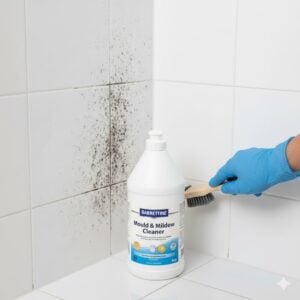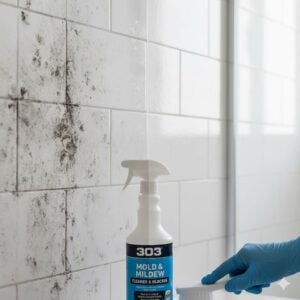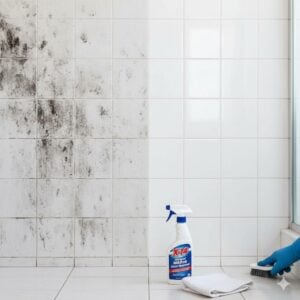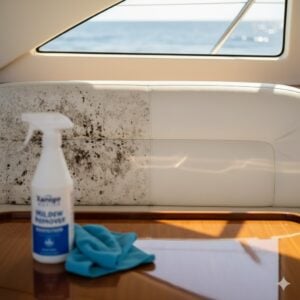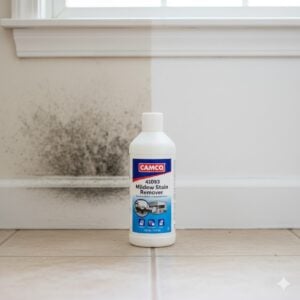Mould is more than just an eyesore on walls or ceilings—it is a living organism that can cause serious health problems if left untreated. In the UAE, where humidity levels are high and air conditioning runs year-round, mould is a common issue in homes, offices, and public spaces. Many people may not even realize that the symptoms they experience—sneezing, coughing, or skin irritation—are linked to mould exposure. Understanding mould health issues is crucial, because it empowers you to protect yourself, your family, and your property. In this article, we’ll explore the different ways mould affects health, who is most at risk, how to recognize the warning signs, and what steps you can take to prevent or address mould problems effectively.
Table of Contents
ToggleWhat Is Mould and Why Does It Matter?
Mould is a type of fungus that grows in damp, humid environments. It reproduces by releasing tiny spores into the air, which are invisible to the naked eye. These spores settle on surfaces and start colonies when they find moisture. While some types of mould are relatively harmless, black mould and other toxic varieties can cause significant health concerns. Mould thrives in hidden areas such as behind walls, under carpets, inside bathrooms, and in air conditioning ducts. Because it is often hidden, the first signs people notice are health-related rather than visual. That’s why mould is not just a cleaning issue—it’s a health issue.
Respiratory Health Issues Caused by Mould
One of the most common effects of mould exposure is on the respiratory system. When spores are inhaled, they irritate the nose, throat, and lungs. For healthy adults, this might cause mild symptoms such as coughing, sneezing, or a stuffy nose. However, for individuals with asthma, allergies, or weakened immune systems, the impact can be much more severe. Asthma attacks may become more frequent and intense, while people with chronic respiratory conditions may find it harder to breathe. Prolonged exposure to mould has also been linked to the development of bronchitis and other long-term lung conditions. In children, breathing mould spores regularly can interfere with lung development, making this issue especially concerning for families.
Allergic Reactions and Mould Sensitivity
Mould spores are a powerful allergen. People who are sensitive to mould may experience itchy eyes, runny nose, skin rashes, and constant sneezing. In some cases, even small amounts of mould in the environment can trigger allergic reactions. This is because the immune system mistakes mould spores for harmful invaders and reacts aggressively. For people with existing seasonal allergies, mould exposure often makes their symptoms worse. Unlike pollen, however, mould can be present year-round indoors, making it a constant threat. Many people in the UAE report feeling unwell indoors but better when they leave the house, not realizing that mould may be the hidden cause.
Skin and Eye Irritation
Direct contact with mould can cause skin rashes, itching, and irritation. This often happens when people try to clean mould without proper protective gear. Some types of mould release mycotoxins that can penetrate the skin, leading to more serious conditions. Eyes are also very sensitive to mould exposure. Redness, itching, and watery eyes are common symptoms. For people who wear contact lenses, mould particles in the air can cause discomfort and even infections. Children, who often touch walls and floors more frequently, are particularly vulnerable to skin-related mould health issues.
Weakened Immune System and Infections
For individuals with weakened immune systems, such as the elderly, infants, or those undergoing medical treatments, mould exposure can lead to infections. Fungal infections may develop in the lungs, skin, or sinuses, and can be very difficult to treat. In hospitals, mould outbreaks are taken extremely seriously because they can pose life-threatening risks to vulnerable patients. Even at home, long-term exposure can weaken the immune system, making people more susceptible to other illnesses like colds and flu.
Neurological and Long-Term Effects
Emerging research suggests that certain types of toxic mould, particularly black mould, may have neurological effects. Symptoms such as headaches, dizziness, difficulty concentrating, and fatigue are often reported by people living in mould-infested environments. While more studies are needed to fully understand the connection, there is enough evidence to suggest that mould exposure is not just a short-term irritation—it can affect mental clarity and overall wellbeing over time. Some people even report experiencing depression-like symptoms that improve once the mould issue is resolved, highlighting the strong link between environment and mental health.
Who Is Most at Risk?
While mould can affect anyone, some groups are more vulnerable than others:
- Children and infants: Their lungs and immune systems are still developing, making them more sensitive to spores.
- Older adults: Weaker immunity increases the risk of infections and severe reactions.
- People with asthma or allergies: Mould exposure worsens existing conditions dramatically.
- Those with chronic illnesses: Immune-compromised individuals face higher risks of fungal infections.
For these groups, even mild mould exposure can lead to serious health issues, which is why proactive prevention and removal are essential.
Recognizing the Warning Signs of Mould Exposure
Since mould is often hidden, health symptoms can be the first indicator of a problem. If you or your family experience persistent coughing, sneezing, headaches, or skin irritation that improves when you are away from home, mould may be the culprit. A musty odor indoors is also a strong sign of hidden mould. Visually, you might notice black or green spots on walls, ceilings, or around windows. Condensation on walls and water stains are red flags that mould may already be present behind the surface.
DIY Steps to Reduce Mould Exposure
For small patches of mould, there are safe steps you can take yourself. Use gloves, a mask, and goggles to protect yourself. Vinegar or hydrogen peroxide can be sprayed onto mouldy areas and left to sit before scrubbing. Baking soda solutions can also help clean and deodorize. After cleaning, always dry the area thoroughly with a fan or dehumidifier. However, it’s important to remember that DIY cleaning only works for minor mould problems on the surface. If mould covers a larger area, keeps coming back, or is inside ducts and walls, professional help is required.
Professional Mould Removal Services in the UAE
For moderate to severe mould problems, calling a professional service is the safest choice. Experts use protective equipment, industrial-grade cleaning agents, and specialized tools like HEPA vacuums and air scrubbers. They also identify the root cause, such as leaks or poor ventilation, and address it so the mould doesn’t return. In the UAE, Bio-On Cleaning Services provides professional mould remediation with transparent pricing. Our costs are kept on the lower side compared to many competitors, and we always verify each estimate with our experts before starting work. This ensures you get fair, accurate pricing without unnecessary extras.
Estimated Price for Professional Mould Removal
The cost of mould removal depends on the size of the affected area. At Bio-On, we provide clear and affordable pricing:
| Volume of Work | Price (AED) |
|---|---|
| Up to 1 sq.m. | 35 per sq.m. |
| 1 to 3 sq.m. | 30 per sq.m. |
| 3 to 7 sq.m. | 25 per sq.m. |
| 7 to 10 sq.m. | 20 per sq.m. |
| More than 10 sq.m. | Free inspection |
For advanced testing, such as air quality checks or mycotoxin analysis, each service is available at AED 1,000. While not always required, these tests can give peace of mind for families who want to be certain their environment is safe.
Prevention: The Best Strategy Against Mould Health Issues
Preventing mould from growing in the first place is always better than treating it later. Keep your home well-ventilated, especially in bathrooms and kitchens. Fix leaks immediately, and don’t let water pool on surfaces. Use exhaust fans and dehumidifiers in high-humidity areas. Schedule regular AC servicing, because ducts are a hidden hotspot for mould growth. Finally, keep an eye out for early signs like damp smells, water stains, or condensation. Acting quickly prevents small issues from becoming health-threatening infestations.
Conclusion
Mould is more than an inconvenience—it is a genuine health risk that can affect your lungs, skin, immunity, and overall wellbeing. Children, older adults, and people with existing health conditions are especially vulnerable. While small patches can be cleaned with DIY methods, larger or recurring mould problems require professional intervention. In the UAE, Bio-On Cleaning Services provides affordable and transparent mould removal starting from AED 20–35 per square meter, with free inspections for larger cases. Every price is verified with our expert team, so you get fair and accurate estimates. If you or your family are experiencing health issues you suspect are linked to mould, don’t wait for the problem to spread. Click the contact button on the right middle of this article, and let us help you restore a safe, fresh, and healthy home.








